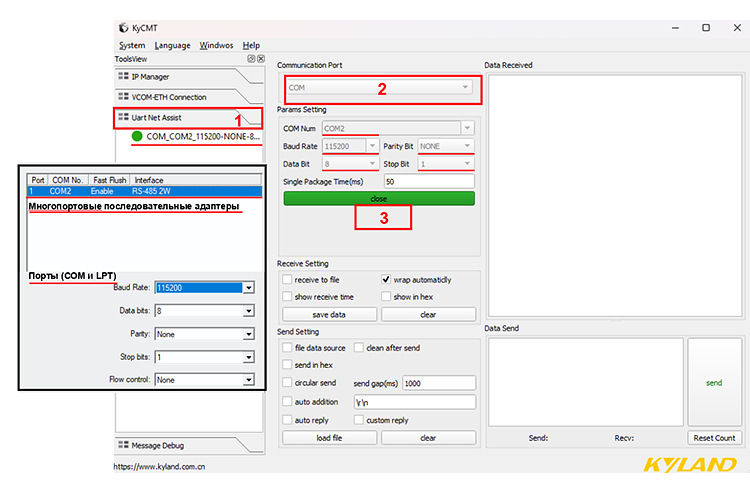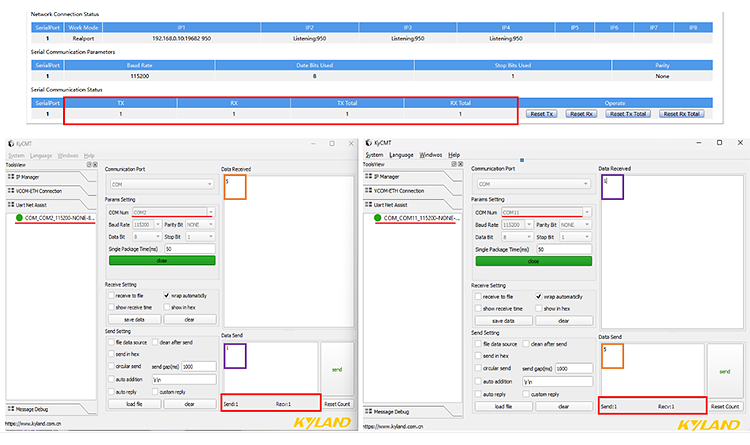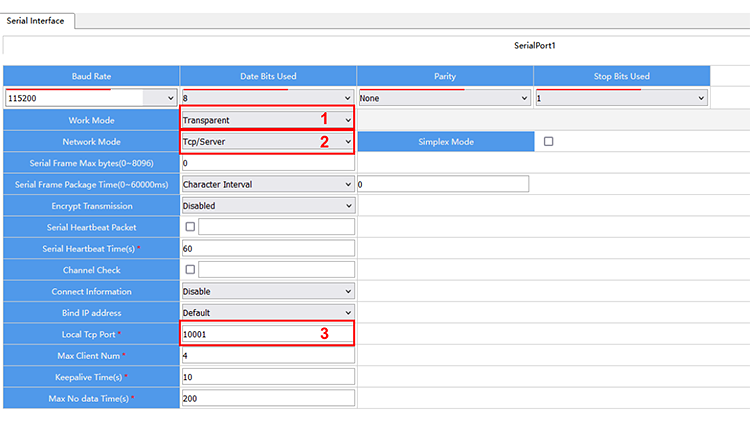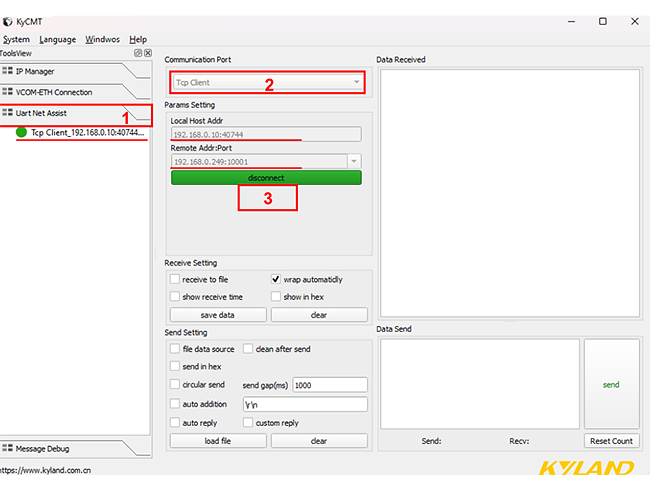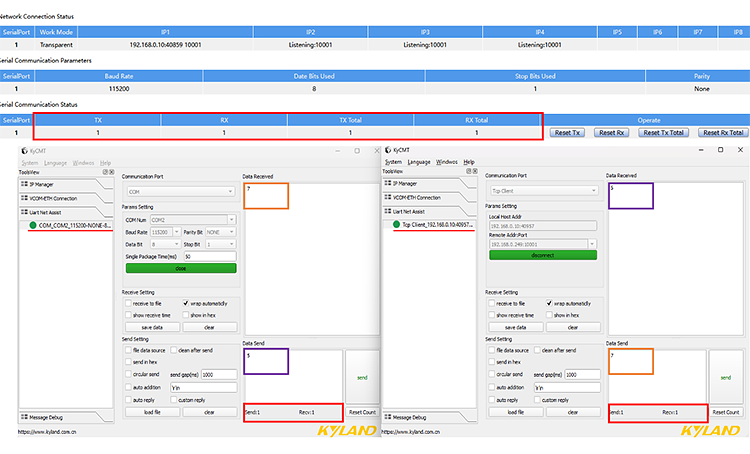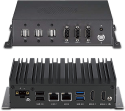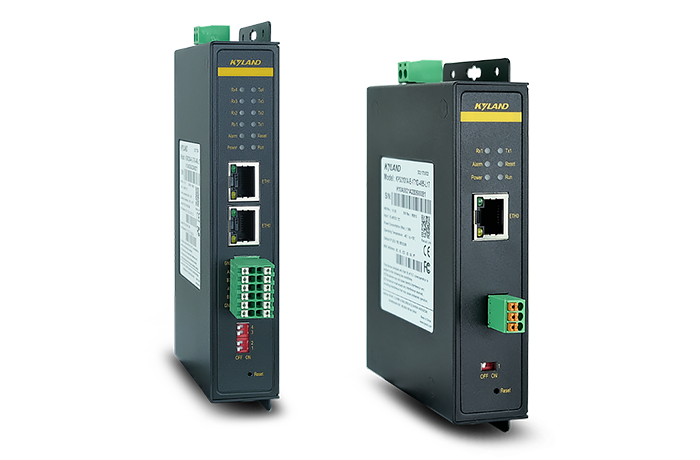
The KPS3000A series converters are designed for converting serial interfaces RS-232, RS-422 and RS-485, providing data transmission over Ethernet network, and also supports transparent data transmission of Modbus RTU protocol. KPS3000A can be used to operate in several modes, the settings of the main ones will be discussed in this article. The most frequently used operating modes include:
- Realport (virtual COM port on PC)
- TCP Server
- TCP Client
In this article we will use the model KPS3101A-E-1T1D-485-L17, which is a model with one Ethernet interface and one RS-485 interface. Find a more detailed list of models in the table below.
Realport mode
Let's set up the converter KPS3101A-E-1T1D-485-L17 in Realport mode. To do this, you need to select the appropriate settings via the server's Web interface, and then use the KyCMT utility. This utility is specially designed to check and debug the device's functionality and is available on the website in the "Files and Documents" section for the corresponding equipment.
To configure the Realport mode in the device's Web interface, you must select this mode and specify the required COM port characteristics that will correspond to the virtual COM port on the PC.
Next, let's launch the KyCMT utility. It is important to take into account that the program must be run as administrator.
The first step is to find the converter. To do this, select the desired network card on the PC to which the device is connected and start the search.
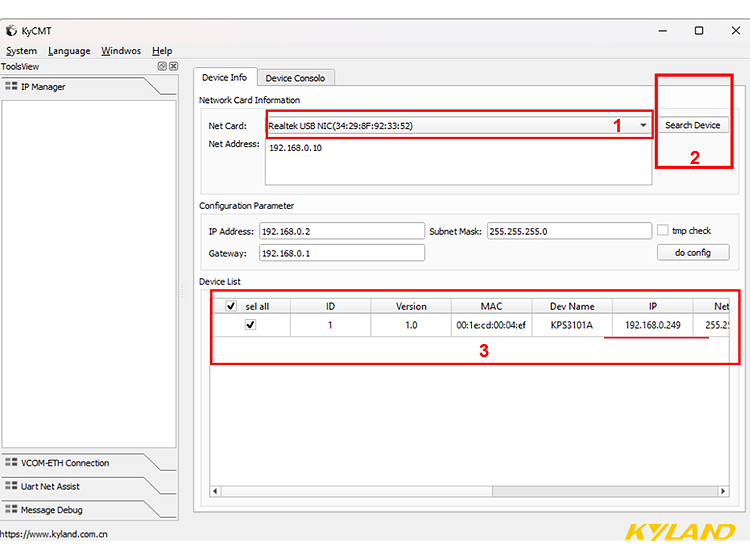
The next step is to add the server's virtual COM port to the KyCMT utility. To do this, you should specify the server IP address and serial port number. After clicking the "OK" button, the created virtual COM port will appear for the KPS3101A-E-1T1D-485-L17 model.
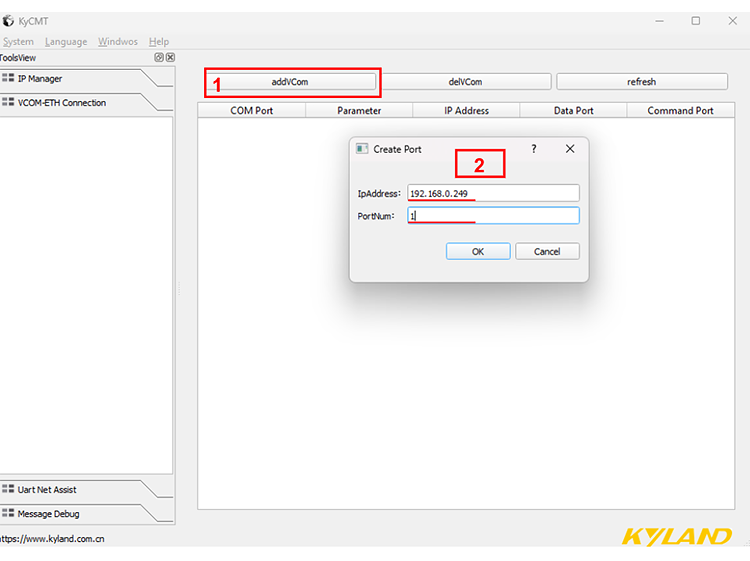
To create a virtual port COM2 on our PC we will use USB to RS-232/422/485 converter I-7561 with the following connection.
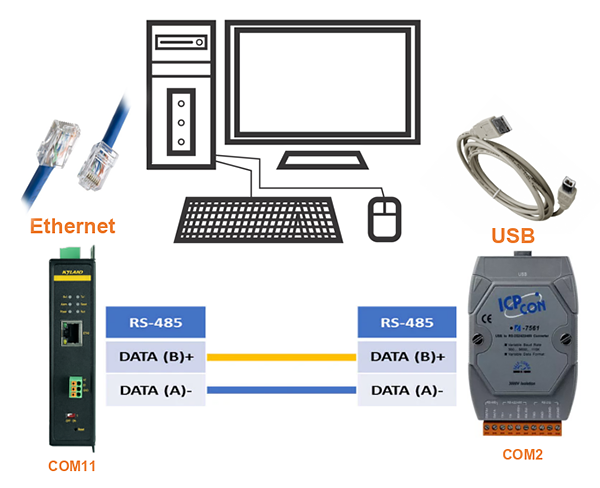
Next, in the Uart Net Assist tab, in the Communication Port field, select the virtual COM2 port on the PC, specify the required characteristics and make the connection.
Further, setting up the virtual COM port of the USB converter I-7561 on PC for all modes it will be similar.
The next step is to open the second window of KyCMT and select the virtual COM port of the server that appears, in this case it is COM11. Apply the appropriate settings, and then make the connection.
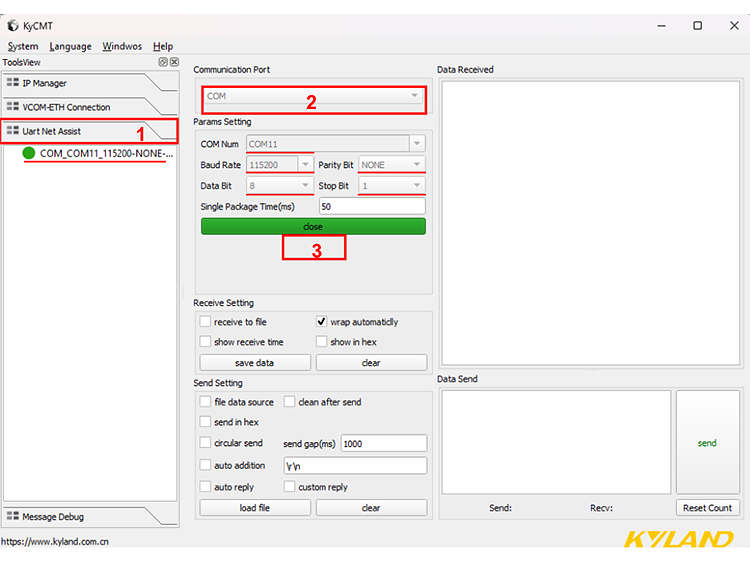
After the settings have been made, we can check the correct operation of the device by sending data to the virtual COM2 port on the PC and back to the virtual COM11 port on the KPS3101A-E-1T1D-485-L17 server.
As a result of sending data, we should receive it back. The correspondence of changes in the TX and RX counters in the program and the Web interface of the device confirms the correctness of the data transfer.
TCP Server mode
In the device's Web interface, you will need to select the Transparent data transfer mode (Work Mode), determine the device's operating mode - TCP Server and TCP port.
To check the server's functionality, in the Uart Net Assist tab, we specify the TCP Client mode, enter the IP address of the host (our PC) acting as the TCP Client and the IP address of the KPS3000A server with the corresponding TCP port.
Then, having sent data to each of the virtual COM ports, we will check the correct display of the transmitted data.
TCP Client mode
In the device's Web interface, you will need to select the Transparent data transfer mode (Work Mode), determine the device's operating mode - TCP Client, host IP address and TCP port.

To check the functionality of the serial interface server, in the Uart Net Assist tab, select the TCP Server mode, specify the IP address of the host (our PC) acting as the TCP Server and the corresponding TCP port.
As a result of a correct connection, the IP address of our KPS3000A server will be determined in the client field.
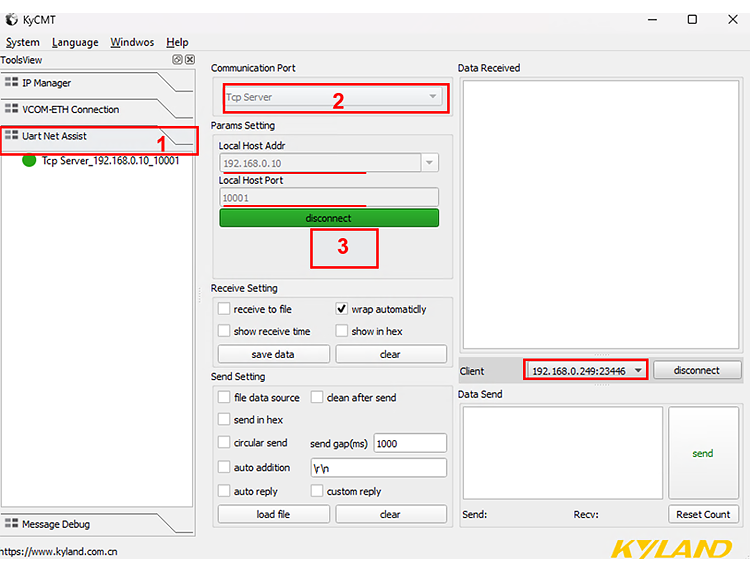
Next, according to the previously described actions, we will check the correctness of the displayed data.
Serial snterface server series KPS3000A has a wide range of modifications, including devices with different numbers of ports, form factors and the presence of redundant power supply, presented in the following table:
| Model name | RS-232 | RS-485 | RS-232/422/485 | Ethernet |
|---|---|---|---|---|
| KPS3101A-E-1T1D-232-L17 | 1 | - | - | 1 |
| KPS3101A-E-1T1D-485-L17 | - | 1 | - | 1 |
| KPS3102A-E-1T2D-232-L17 | 2 | - | - | 1 |
| KPS3102A-E-1T2D-485-L17 | - | 2 | - | 1 |
| KPS3204A-E-2T4D-232-L17 | 4 | - | - | 2 |
| KPS3204A-E-2T4D-485-L17 | - | 4 | - | 2 |
| KPS3208A-E-2T8D-232-L17 | 8 | - | - | 2 |
| KPS3208A-E-2T8D-485-L17 | - | 8 | - | 2 |
| KPS3101A-1T1D-232/485/422-L17-L17 | - | - | 1 | 2 |
| KPS3102A-1T2D-232/485/422-L17-L17 | 2 | 2 | ||
| KPS3204A-2T4D-232/485/422-L17-L17 | 4 | 2 | ||
| KPS3208A-2T8D-232/485/422-L17-L17 | 8 | 2 | ||
| KPS3224A-2T24D-232/485/422-HV | 24 | 2 | ||
| KPS3224A-2T24D-232/485/422-HV-HV | 24 | 2 |

